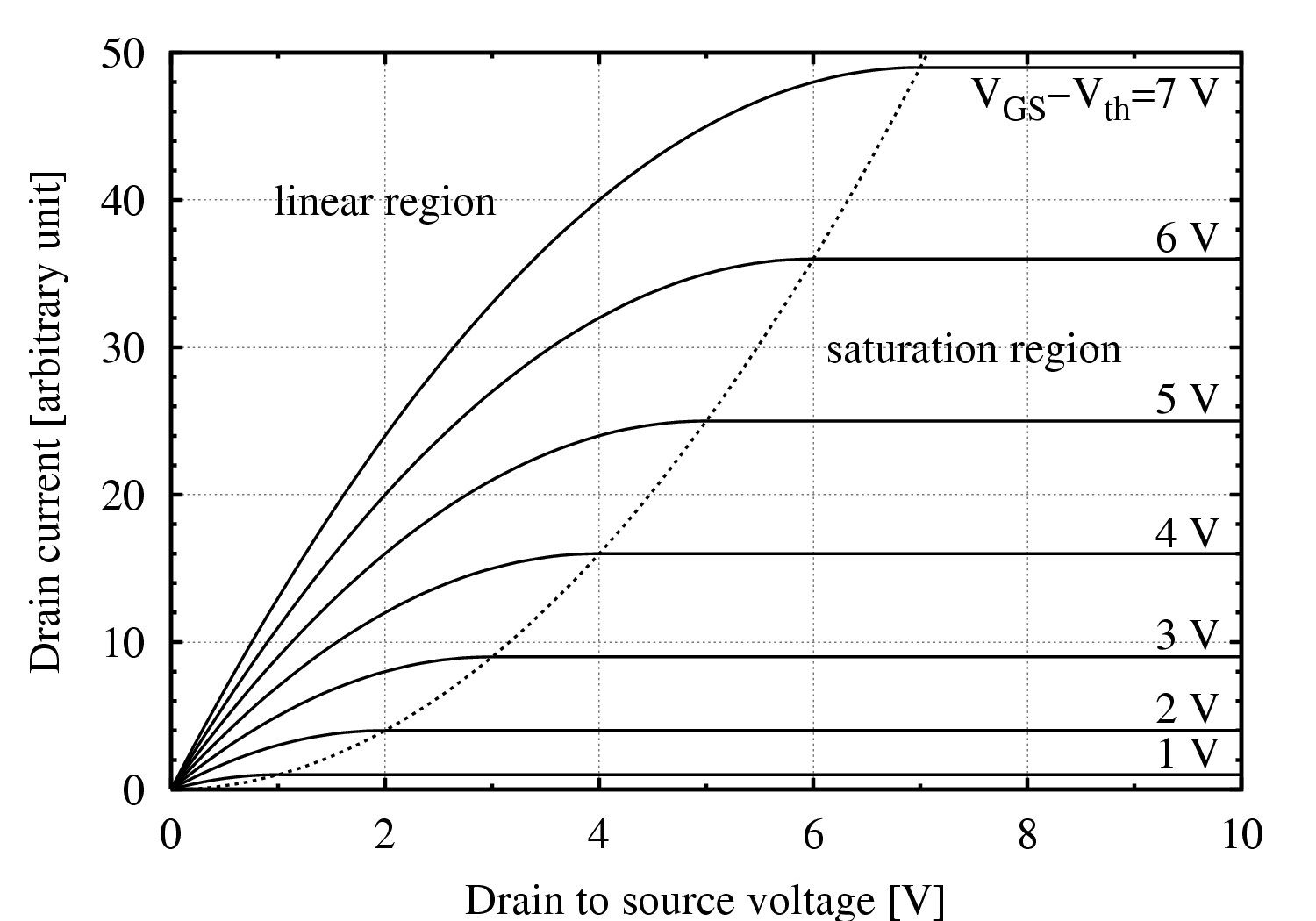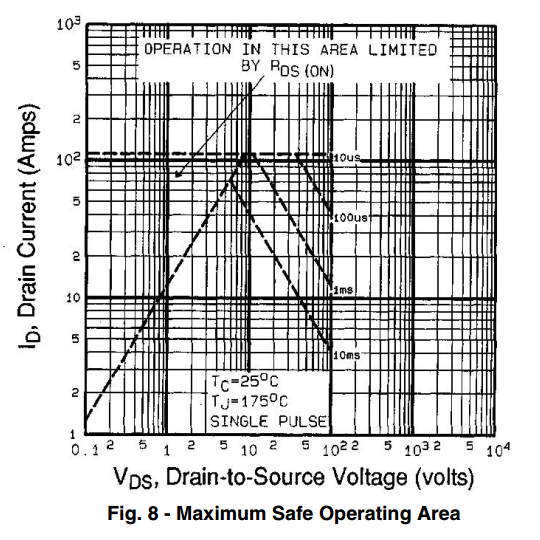The most important component of this electronic load is the MOSFET. MOSFETs are known for their low resistance and ability to switch current on and off very quickly. However, thanks to the physics of how MOSFETs work, if we adjust the drive voltage applied to the gate, we can put it into a high-resistance "linear-region". In this region, a MOSFET acts as a variable resistor and dissipates a large amount of power, perfect for our electronic load usage.
It's important to pick a MOSFET that can handle high-power dissipation. I originally tried to use an IRF540, but looking at its datasheet, we can see it's not really suited for linear-mode use:
We can use this figure from the datasheet to determine if a MOSFET can handle the load we want to use it for. The downward sloping lines represent the maximum power (volts * amps), for certain length pulses of current, at 25 degrees Celsius. Unfortunately, it only gives us ratings for pulses up to 10ms long, not suitable for DC usage. We can compare it to the datasheet for the IXTH75N10L2, a MOSFET specifically designed for linear-mode use:
Looking at this figure, we can see a line labeled "DC", which means it can handle much longer 'on-times' (though there are still limits). The datasheet states that this MOSFET is specifically designed for linear operation and that it has a "Guaranteed FBSOA", or Forward-Bias Safe Operating Area, at 75 degrees Celsius. This makes it a perfect fit for an electronic load!
However, these features do come at a cost: compared to the price of a single IRF540 ($1, Digikey), these special linear-MOSFETS from IXYS are pricey ($12, Digikey). I managed to get four of these special FETs at a surplus shop for $5 total. This also happens to be the same model of MOSFET used in the Mightywatt project. For my inital prototype, this is the FET I am using. The final design should be able to use any compatible MOSFET, so you can customize the electronic load to what you expect to be testing, allowing for cheaper options to be fitted.
This log gives an overview of one aspect of choosing a MOSFET for an electronic load, but the FBSOA rating of the mosfet is only one variable to look at. Other factors to consider then picking a MOSFET are its voltage ratings (will it breakdown at the voltage you are testing?), its gate drive voltage (is my controller voltage high enough to turn on the FET?), and how to remove the heat dissipated by the device (is my heatsink big enough to do a test without overheating?).



Discussions
Become a Hackaday.io Member
Create an account to leave a comment. Already have an account? Log In.